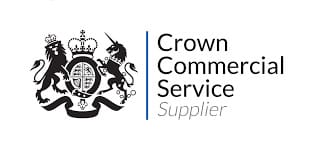RUSSAM GUIDE TO IR35
At Russam we are working closely with our interim candidates and clients to guide them through what’s involved and what their options are. If you have any questions, get in touch today.
If your business is affected by the new legislation, we would strongly urge, if you haven’t already, to start taking steps to determine the status of all contractors operating through a PSC within your business, particularly given timelines involved.
There are a vast number of experts available to offer advice and guidance to ensure you have the support you need to make informed decisions.
This is an excellent opportunity to take a step back, review your business operating models and consider the best approach for your projects and business talent in 2020.
Russam is fully geared up and ready to work with you. Our focus is on finding you the “right talent, at the right time” to help your organisation to thrive. We can advise through the structural set up including the tax determination process.
What is IR35?
The Intermediaries Legislation (IR35) has been around since 2000 and was brought in to remove the tax advantages for people that work for organisations, but on a self-employed basis. The targets were the so-called ‘disguised employees’ – contractors that work alongside in-house teams, without being on the payroll.
Contractors* found to be in breach of IR35 were fined the equivalent tax for an employee in the same role. To further identify these contractors, new rules were introduced in April 2017 for public sector organisations. Instead of contractors being responsible for determining their IR35 status, the obligation was handed to the organisation hiring the contractor, i.e. the client. If a contractor is deemed to be ‘inside’ IR35, the public sector organisation had to deduct national insurance and income tax from the contractor’s pay.
The key take away point here is that the contractor no longer had control over the decision in terms of inside or outside of IR35.
*including all types of off-payroll workers including interim managers.
What effect does the IR35 have?
Once the rulings for the IR35 came in, almost 40 per cent of contractors abandoned the public sector altogether, with IT an area that suffered particularly. It led to resource shortages and delayed projects.
Many contractors that did remain in the public sector market requested higher pay to replace the income that they were used to as self-employed workers.
What’s happening with IR35 in April 2020?
In April 2020 the legislation will extend the same rules to the private sector, although small businesses (meeting two or more of the following criteria: under 50 employees, balance sheet total of not more than £5.1m, turnover under £10.2million) will be exempt.
Note. Most charities, we are led to believe will also be exempt, as “donations” will not be included in the turnover figure.
In line with the public sector, the new rules will apply to work done by contractors working through intermediaries such as personal service companies (PSC). It is important to say that the tests for IR35 are not changing but only the responsibilities for making the IR35 status decision and related deductions are (if deemed inside IR35).
A lot of contractors will therefore be affected but certainly not all. Many will be able to continue as they were before. For any interim managers working Outside of IR35 from April 6th, the client will have to provide a written Status Determination Statement (SDS), which will outline the reasons for this decision.
Where a role is deemed to be inside of IR35, PAYE and NIC will need to be deducted from the payments made to a contractor as though there were an employee, and Employer NIC at 13.8% and the Apprentice Levy at 0.5% will also need to be paid by the client.
So, in summary, the changes effectively shift responsibility for the IR35 tax compliance from the PSC to the client or intermediary.
What do companies need to do?
1. Start now. Assess all off-payroll arrangements (all contractors – not just those working via their own PSCs) in the organisation; get going with this now if you haven’t already. Of course, see if you are exempt or not first!
2. Work in partnership with your recruitment partners/intermediaries and the contractors in question. It is important to understand the “supply chain” here as they can be quite complicated in terms of the procurement of talent. Note: This can include the recruitment business, the contractor and PSC.
3. Consider expert support – for example, an employment law firm or internal team.
4. Ensure terms of engagement with contractors are transparent and accurate.
5. Make a tax status decision and prepare a tax determination statement – called a Status Determination Status (SDS).
Note. Keep detailed records of the employment status determinations including justifications for the determinations and fees paid under the contract.
6. Again it is important for all parties to collaborate closely and have a rich flow of information
Note: You might want to identify who within the organisation will make the IR35 status decisions now and going forward.
- There is an HMRC online tool called CEST but it is still not reliable from what we understand
- CEST is not mandatory and clients can use any assessment method they wish as long as “reasonable care” is taken to look at the tax status.
- There are established IR35 external reviewers that can be used to help.
7. Communication of the status agreement and engagement with all parties in the supply chain
Note. Important to work with recruitment partners like Russam as we may need time to implement additional processes in the set-up
8. There is a process for resolving agreements between parties
Contractors deemed to be outside of IR35:
- No major change. Our clients can continue to contract via Russam who will in turn contract with the PSC of the contractor.
- Our outside IR35 contracts have been amended; for example, there is the obligation for the client organisation we work with to complete a status declaration statement (SDS).
- But important to review the actual nature of the assignment on a regular basis with all parties involved.
Contractors deemed to be inside of IR35:
- Discuss a PAYE contractor set-up (or even a permanent role with the organisation)
Note. There might need to be a commercial conversation as the contractor will be looking at c25% less take-home pay.
Russam has developed a simple and innovative fee structure for introducing PAYE contractors that works out at 2% commission per month to our clients. - Our Russam “inside” IR35 contracts are amended and available to share with our clients.
At Russam we are working closely with our interim candidates and clients to guide them through what’s involved and what their options are. If you have any questions, get in touch today.
Russam Compliant Contractual Agreements
We have amended our agreements to prepare for the IR35 changes.
CONTRACTORS DEEMED TO BE OUTSIDE OF IR35:
- No major change. Our clients can continue to contract via Russam who will in turn contract with the PSC of the contractor; or the client can of course contract directly with the PSC of the contractor.
- Our outside IR35 contracts have been amended; for example, there is the obligation for the client organisation we work with to complete a status declaration statement (SDS).
- It is important to review the actual nature of the assignment on a regular basis with all parties involved.
CONTRACTORS DEEMED TO BE INSIDE OF IR35:
There are two options and the set-up of an engagement is straight-forward.
- Discuss a PAYE set-up on a fixed-term
o There will no longer be a daily rate, but the client will pay a salary and a separate fee if introduced by Russam.
o The interim/contractor essentially becomes like any other employee on the payroll. The NI and apprenticeship levy need to be paid; and the contractor will have full employment rights including sick pay, holiday allowance and pension.
o An advantage of this approach is it is easy to set up and there is no ambiguity with the tax status of the contractor - Discuss use of an Umbrella firm.
Russam can use this option for all interims/contractors that fall inside of the off-payroll working legislation. We will only work with FCSA approved umbrella companies.
- The interim/contractor will then become an employee of the umbrella company.
- The umbrella company is responsible for paying the relevant taxes for their employees. Interims/contractors pay a fee to the umbrella to handle the accounting and this comes at a cost to them (and not the client organisation).
- Clients can also use this approach to structure directly with interims/contractors.
- This option may reduce costs for the client.
For both options there will need to be a clear conversation about the commercials; it must work well for both the client organisation and the candidate. The “take home” pay can be c.25% less for an inside IR35 contract versus outside one.
Either way there are assurances and audit trail that the appropriate tax is paid.
Russam has developed a simple and innovative fee structure for introducing “Inside IR35” off-payroll interims & contractors that works out at 2% commission per month to our clients.
Key Considerations for determining status
HMRC will expert a fair and balanced review of each assignment and the circumstances to check whether it falls inside or outside of IR35. Possible factors to consider include:
Supervision, Direction, Control: One of the key determinants of IR35 status is the extent to which a client controls where, when and how an individual performs their work. If, for example, a contractor works at set times at a business premises this implies employment, as does the need for supervision of the tasks performed, which would not be expected to be as great where a self-employed skilled individual has been engaged.
Mutuality of Obligation (MOO): Is there an obligation to offer work, and does the contractor have to accept it? If so, the contract may fall within IR35. If, on the other hand, the contractor can reject the work then they may fall outside of IR35.
Financial Risk: Where does the financial risk sit? If all the risk of the project lies with the client, for example, then it is likely the role will sit within IR35.
Part & Parcel: To what extent has the contractor integrated with the business. For example, do they have line management responsibilities, attend staff meetings and socials, or receive staff benefits?
The Intention of the Parties: Even if no formal written contract exists, HMRC would want to determine what the true status of the relationship between the parties is – one of employment or self-employment.
Substitution: Can the contractor bring someone else in to complete the contract, or do they need to do the work themselves? If the work cannot be done by another contractor, they are likely to be within IR35.
Provision of Equipment: Does the contractor use company equipment or their own?
Basis of Payment: Those outside IR35 are more likely to be paid a set fee for the completion of a project.
Exclusive Service: Does the contractor work for just one client and/or has their contract been renewed multiple times? Those outside of IR35 are likely to have other clients.
End date: Those with an end date for their assignment or project are more likely to be outside of IR35.
Advice for our interims and contractors – what to do?
We believe that there will be more decisions falling ‘inside IR35’, particularly if you are taking on a contract lasting several months where you are working for a single organisation. For many thousands of skilled and career interim professionals (Russam is typically working at the more senior leadership levels); April 2020 is “business as usual”.
- Engage closely with the client and recruitment intermediary if there is one. You may well be working through your PSC already and applying the IR35 rules in a totally compliant way; however, the client is now responsible for assessing your status for tax purposes and you need an SDS (status determination statement).
- All parties need to be on the same page here. It is not about adding an unrestricted substitution clause; it is about working through the circumstances. It is about a rich flow of information
- If “outside of IR35” then the PSC remains responsible for its own tax affairs. It is important to review the actual nature of the assignment on an ongoing basis.
- If the client determines that the role is “inside of IR35” then there are a lot of different options to work through:
o The simplest approach is to accept that you may now need to work and be paid as an employee for the allotted time (PAYE), rather than invoicing for your work via your PSC/Limited Company. The client may also want to discuss a permanent role with you.
o All parties need to discuss the top line commercials to ensure there is the right level of reward for effort and achievement!
o Another approach is to be paid through an Umbrella company.
Umbrella companies:
Note. We have no vested interest in recommending any particular umbrella firm. We have used and vetted a number that are FCSA approved (www.fcsa.org.uk); and we are confident that they work to high standards for compliancy and transparency.
- www.icsuk.com
- www.paystream.co.uk
- www.brookson.co.uk
- www.giantumbrella.com
- www.jsagroup.coluk
- The recruitment agency can pay the Umbrella directly or the client can.
Alternatively, you could seek out new work with smaller companies that are exempt from the ruling.
If you’re unsure, don’t sign any contract without legal advice.
Which companies are exempt from undertaking IR35 status determinations?
Only those that meet at least two of the small company exemption criteria. During a 12-month period turnover cannot be higher than £10.2 million; balance sheet total not higher than 5.1 million and number of employees no more than 50. Companies that engage temporary workers either directly, via an agency or other intermediary and where tax and NIC’s are taken at source, do not need to undertake IR35 determinations.
Is there a way for PSC contractors to avoid IR35 exposure?
In short, there is nothing that can be done to ‘avoid’ IR35 determinations being made on your engagements. Unless you are a small company per HMRC’s definition, from April 2020 it is the end client’s responsibility to carry out determinations on your engagements. If you are a small company, the responsibility of determination continues to reside with the contractor/PSC.
What will be the longer-term consequences of IR35?
Some companies may lose access to a huge swathe of talent that has traditionally represented an important component of their total extended workforce. This will impact on their mid to longer term planning and capability to execute. Some companies are already hiring more permanent staff, which will create further challenges and problems. In technology where there is a high churn and short business cycles– skills become irrelevant fast leaving the skills and expertise within the workforce no longer aligned to current and future needs. Businesses are craving agility and speed-to-market. They can be rendered less flexible by a more rigid workforce skills base and structure and this will provide opportunities for industry challengers and new entrants to disrupt.
How will employers change the way they engage contractors?
After a time, the dust will settle, and organisations will start exploring new compliant approaches. Companies will increasingly shift to an infrastructure where they can ‘procure services’ to deliver outcomes, rather than ‘hiring contractors’ to perform a role. Fixed price deliverables will become more common over the current ‘day rate’ that many contractors use today. The individual ‘service providers’ contracted to deliver theses outcomes will not be subject to the same traditional ‘supervision, direction & control’ relationship that many contractors currently work under.
What’s the immediate effect of IR35 going to be?
We’re already seeing big banks and other firms putting a blanket ban on personal service companies as a result of change in policy in response to the amended legislation. In these cases, contractors are being asked to either become a permanent member of staff or be engaged through an agency or umbrella provider on a PAYE basis (where the fee payer will make the deductions). For those contractors who believe they can operate legitimately on an outside IR35 basis, they may decide to leave their assignments and seek other opportunities.
What are the financial implications of IR35 for employers?
If you change previous PSC engagements to permanent headcount, you will need to consider the apprenticeship levy and employers’ NI. So that’s an additional 17-18% on staffing costs. Then you have bonuses, pensions, real estate costs and more on top. Longer term, more investment will have to go into training and L&D where technical or specialist knowledge workers can quickly become obsolete – contractors pay for their own learning and training of course.
Who is responsible for making the IR35 determination?
The end client (or work giver), at the top of the supply chain. It doesn’t matter how many intermediaries there are. They may ask intermediaries to help with the determination, but they are ultimately liable.
Is HMRC’s CEST tool accurate?
The common criticism of CEST is that it is too simplistic – it can’t consider the nuance of context. The important point is that HMRC (as of Nov 2019) is saying it will stand by CEST determinations. Therefore, they are ‘accurate’ in its eyes. We are expecting an update in the CEST tool before the law comes into effect – so it will be interesting to see what changes. Make sure you keep current with these expected changes.
What are the key criteria to fall outside IR35?
There is no one key criteria – and HMRC has not given a specified weighting to them. The issues of direction and control, mutuality of obligation and right of substitution are perhaps the most fundamental.
How can I determine IR35 status?
The CEST tool can be used of course but the key is to use “reasonable care” and work closely across all parties involved in terms of looking at the nature of the work and then make a determination.
Who is liable in the event of non-compliance?
Each party within the supply chain is required to demonstrate reasonable care has been undertaken in meeting their obligations regarding IR35 compliance. The ultimate responsibility by virtue of the transfer of debt liability is to the highest party within the supply chain, ie. the work giver or end client. All parties should be equally motivated to ensure compliance to its own and each other’s obligations.
What is the difference in take home pay?
Ultimately this relates to the different tax treatment of an individual relative to the applicable taxes paid under the two different engagement models. Payment of corporation tax that a PSC would pay (currently at 19%) is clearly lower than personal income tax (currently at 20, 40 and 45% subject to earnings) and NIC’s at 12% with an additional 2% on earnings above £46,350 pa).
We hope that you found this Guide* useful and relevant as you look at your off-payroll workers.
To reiterate, Russam is fully geared up and ready to work with you. Our focus is on finding you the “right talent, at the right time” to help your organisation to thrive. We can advise through the structural set up including the tax determination process.
Please get in touch if we can help in anyway!
The Russam Team
*This IR35 information guide does not constitutes legal advice and should not be treated as such. The contents of this guide are for general information purposes only. Whilst we endeavour to ensure that the information within this guide is correct, no warranty, express or implied, is given as to its accuracy and we do not accept any liability for error or omission.

Contact us
Call us on 07930 356305 or email HQ@russam.co.uk








